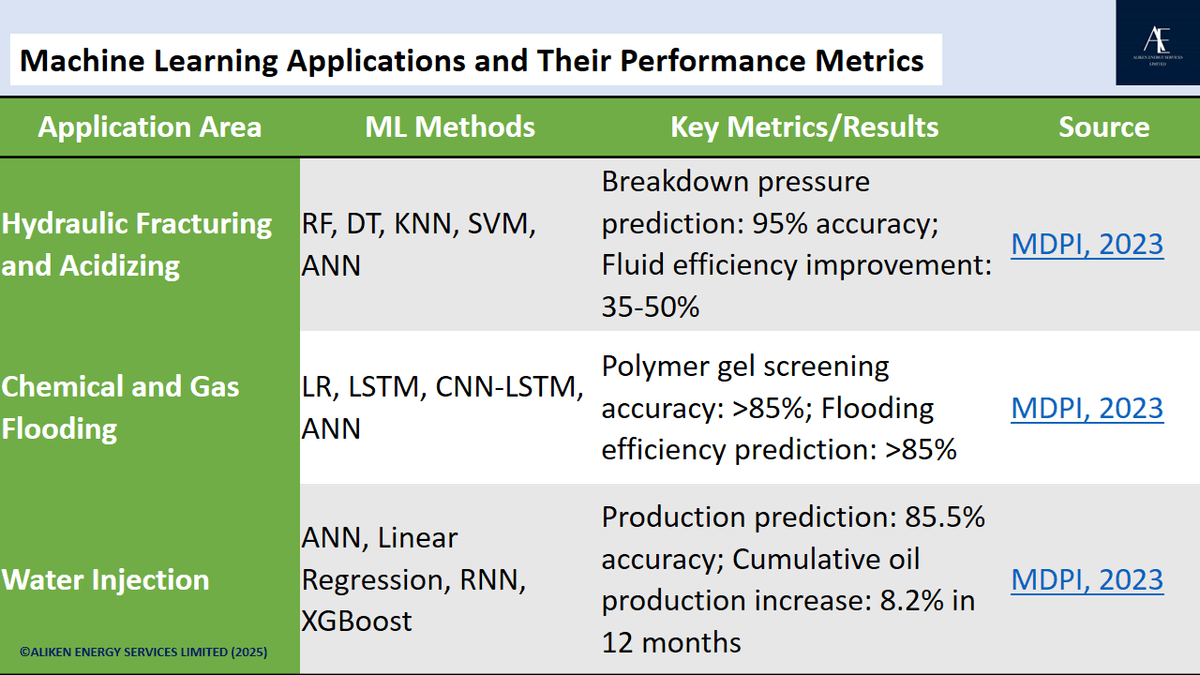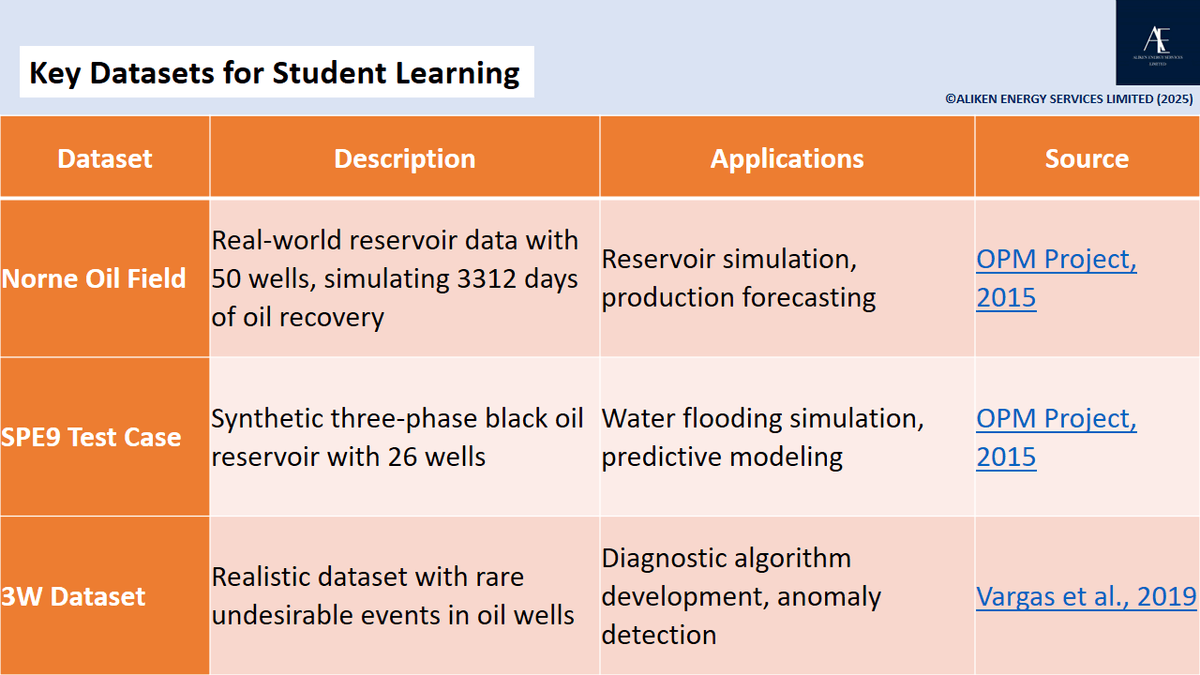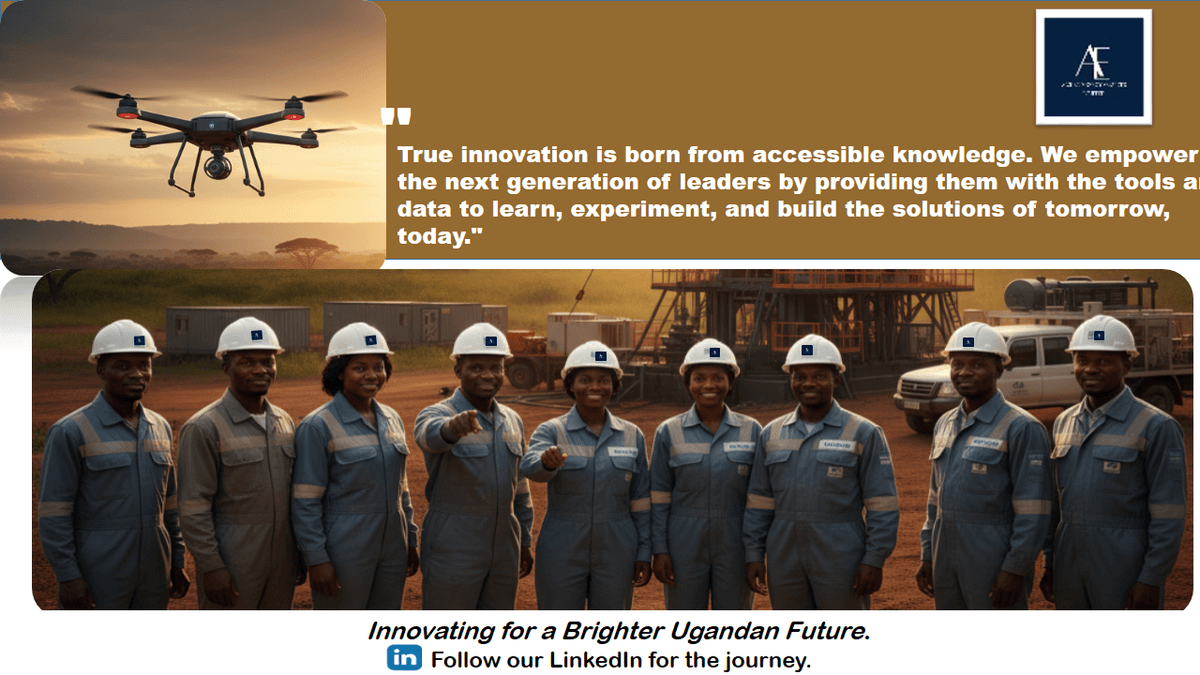AI in oil and gas can difinately be a game changer in this field! Engineers are now able to see what was once invisible, transforming complex subsurface data into precise, actionable insights. Leveraging machine learning, we can not only characterize reservoirs with unprecedented accuracy but also simulate future performance.
Article Contributor: Eng. Hillary Aliganyira
AI and Machine Learning for Advanced Reservoir Characterization and Simulation in Oil and Gas
Key Takeaways:
Enhanced Accuracy and Efficiency: AI and ML are transforming reservoir characterization by improving prediction accuracy and streamlining workflows, as evidenced by industry leaders like Shell and BP, who use these technologies for seismic analysis and reservoir management.
Accessible Learning Opportunities: Students can dive into AI and ML using publicly available datasets like the Norne Oil Field and tools like Python’s scikit-learn, encouraging hands-on learning and innovation.
Introduction
Can we visualise a future where oil and gas extraction is not only more efficient but also more sustainable, driven by the power of Artificial Intelligence (AI). This is no longer a distant vision but a reality unfolding today, with AI and Machine Learning (ML) revolutionizing reservoir characterization and simulation. These technologies enable engineers
to interpret complex seismic data with unprecedented accuracy, predict
reservoir behavior, and optimize production strategies, transforming the oil and gas industry. Research suggests AI can boost operational efficiency by over 80% and achieve prediction accuracies up to 95% for critical reservoir parameters (Novi Labs, 2025). For student engineers, the opportunity to engage with these cutting-edge tools through free datasets and open-source platforms makes this an exciting and accessible field to explore, fostering innovation and practical learning.
The Role of AI and ML in Reservoir Engineering
The oil and gas industry is undergoing a profound digital transformation, with AI and ML at the forefront of optimizing reservoir characterization and simulation. These processes are essential for understanding subsurface hydrocarbon resources and developing efficient extraction strategies. AI and ML enable the analysis of vast datasets, identifying patterns and correlations that traditional methods often miss. By
leveraging algorithms like Support Vector Machines (SVM) and Artificial Neural Networks (ANN), engineers can achieve more accurate predictions of reservoir properties such as porosity and permeability, as well as optimize production workflows (MDPI, 2023).
Specific Applications
AI and ML are applied across several critical areas of reservoir engineering:
Seismic Data Interpretation: Deep learning models, such as Long Short-Term Memory (LSTM) networks, enhance the interpretation of seismic data, leading to more precise subsurface imaging. These models can process thousands of variables simultaneously, detecting complex patterns that improve reservoir characterization (Novi Labs, 2025).
Predictive Modeling: ML algorithms like Random Forest (RF) and ANN reduce forecasting errors and computational time compared to traditional decline models. For instance, studies in the Bakken formation have shown RF models achieving high accuracy in production forecasts (Bhattacharyya & Vyas, 2022).
Hydraulic Fracturing and Acidizing: ML methods like RF, Decision Trees (DT), and K-Nearest Neighbors (KNN) achieve up to 95% accuracy in predicting parameters like breakdown pressure, optimizing fracturing designs (MDPI, 2023).
Chemical and Gas Flooding: Algorithms such as Logistic Regression (LR) and Convolutional Neural Networks (CNN-LSTM) predict oil displacement with over 85% accuracy, aiding in injection plan optimization (MDPI, 2023).
Water Injection: ANN and Linear Regression models improve production predictions and optimize water injection schemes, with some studies reporting an 8.2% increase in cumulative oil production over 12 months (MDPI, 2023).
The following table summarizes keyML applications and their performance metrics:

Industry Case Studies
Leading oil and gas companies areharnessing AI and ML to drive innovation and efficiency:
Shell: Utilizes AI for predictive maintenance, reducing downtime and costs, and for seismic data analysis to enhance exploration precision. AI-powered seismic analysis improves subsurface imaging, driving innovation in drilling and logistics (Appinventiv, 2025).
BP: Employs AI for geological data analysis, streamlining drilling site identification and optimizing production processes (Appinventiv, 2025).
ExxonMobil: Leverages AI for reservoir management and safety monitoring, maximizing extraction efficiency through real-time analytics (Appinventiv, 2025).
Chevron: Uses AI to process seismic data with high accuracy, improving reserve identification and reducing operational downtime through predictive analytics (Appinventiv, 2025).
These examples demonstrate AI’s transformative impact, setting new standards for operational excellence.
Student Accessibility and Learning Opportunities
AI and ML are not just for industry professionals; they are accessible to student engineers, aligning with Universal Design for Learning (UDL) principles to ensure inclusivity. Students can explore these technologies using:
Public Datasets:
Norne Oil Field: Real-world reservoir data simulating 3312 days of oil recovery with 50 wells, ideal for simulation and forecasting exercises (OPM Project, 2015).
SPE9 Test Case: Synthetic dataset for three-phase black oil reservoirs, suitable for water flooding simulations (OPM Project, 2015).
3W Dataset: Realistic dataset with rare undesirable events in oil wells, useful for developing diagnostic algorithms (Vargas et al., 2019).
Open-Source Tools: Python libraries like scikit-learn, TensorFlow, and Keras allow students to build predictive models, exploring regression, classification, and neural networks.
The following table lists key datasets for student learning:

These resources enable students toengage with real-world problems, nurture skills in data analysis and predictive modeling.
Challenges and Future Prospects
While AI and ML offer significant benefits, challenges remain, including data quality, scarcity, and the lack of physics-based interpretability in some models (MDPI, 2023). Future advancements will likely focus on integrating physics-driven and data-driven approaches, improving algorithm robustness, and expanding datasets for training. For students, these challenges present opportunities to contribute to innovative solutions, shaping the future of the industry.
Conclusion
AI and ML are reshaping reservoir characterization and simulation, offering enhanced accuracy, efficiency, and sustainability in the oil and gas industry. With major companies like Shell and BP leading the way, these technologies are setting new benchmarks for operational excellence. For student engineers, accessible datasets and tools provide a gateway to explore and innovate in this transformative field. As the industry continues to evolve, AI and ML will play a central role in driving a more efficient and sustainable energy future.
References
Appinventiv. (2025). Nine best use cases of AI in the oil and gas industry. Available at: https://appinventiv.com/blog/artificial-intelligence-in-oil-and-gas-industry/
Bhattacharyya, S., & Vyas, A. (2022). Machine Learning for Reservoir Forecasting in the Bakken. Available at: [URL not provided in source; refer to original study]
IBM Developer. (2020). Oil Reservoir Simulations Dataset. Available at: https://developer.ibm.com/exchanges/data/all/oil-reservoir-simulations/
Li, R., et al. (2020). Artificial Intelligence Method for Flowback Control of Hydraulic Fracturing Fluid in Oil and Gas
Wells. Processes, 11(6), 1773. DOI: 10.3390/pr11061773MDPI. (2023). Machine Learning in Reservoir Engineering: A Review. Available at: https://www.mdpi.com/2227-9717/12/6/1219
Novi Labs. (2025). AI in Reservoir Engineering: How Artificial Intelligence is Transforming Oil & Gas. Available at: https://novilabs.com/blog/ai-in-reservoir-engineering-how-artificial-intelligence-is-transforming-oil-gas/
OPM Project. (2015). Open Data Sets for Oil Industry. Available at: https://www.dr-blatt.de/blog/posts/open-data-sets-oil-industry/
Vargas, R. E. V., et al. (2019). A realistic and public dataset with rare undesirable real events in oil wells. Journal of Petroleum Science and Engineering, 181, 106223. DOI: 10.1016/j.petrol.2019.106223


